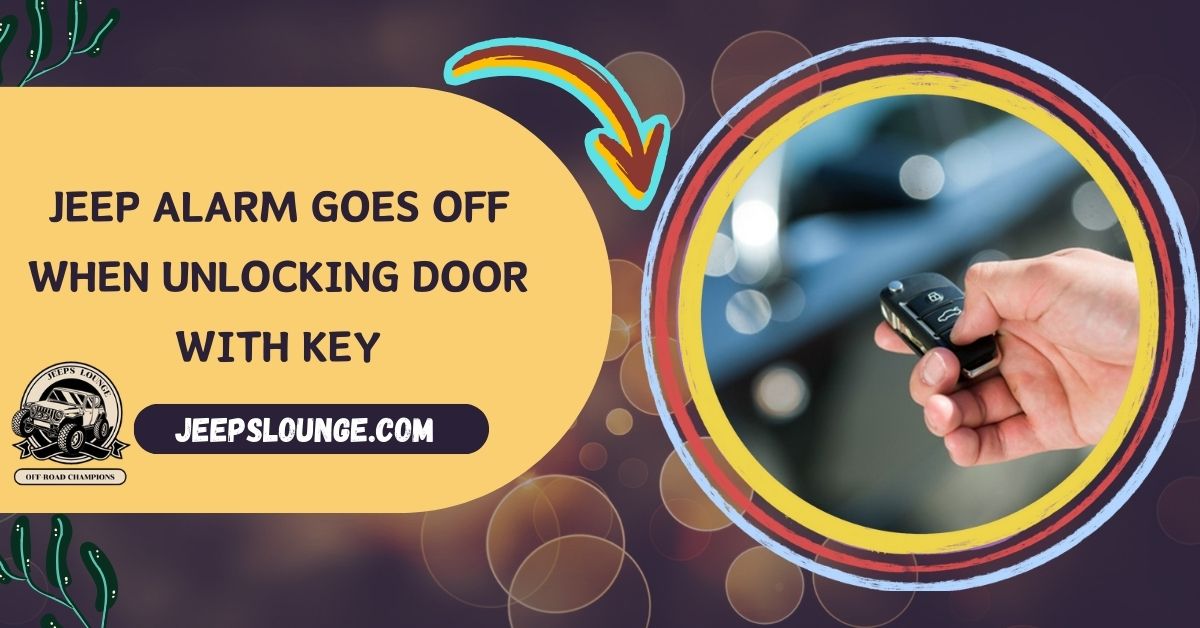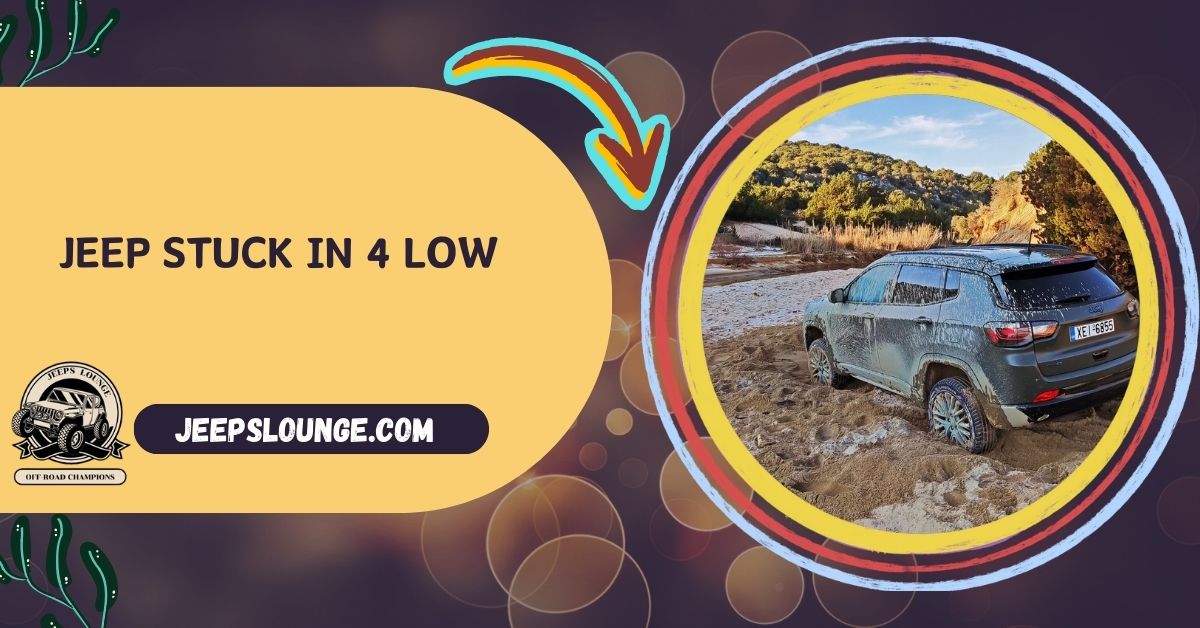Is your Jeep leaving you stranded after a hot drive? Learn why your Jeep won’t start when hot, discover solutions to get back on the road, and find tips to prevent future issues.
Heat soak refers to the phenomenon where engine components absorb and retain heat after the engine has been running for an extended period, particularly in hot weather. This excessive heat can negatively impact various systems, leading to hot no-start issues.
The thrill of adventure fades fast when your Jeep refuses to start after a hot day. This guide dives deep into the reasons behind this frustrating issue, offering solutions to get you back on the road and valuable preventative tips to keep your Jeep running smoothly.
Table of Contents
Understanding The Problem: Jeep Won’t Start When Hot
Defining The Issue:
You’ve just finished a thrilling off-road adventure in your Jeep, but it refuses to budge when you try to start it after a period of hot driving. This frustrating scenario, commonly called a “hot no-start,” can leave you stranded and disrupt your entire journey.
Inconvenience And Potential Safety Concerns:
A Jeep not starting when hot can cause significant inconvenience and pose potential safety concerns:
- Inconvenience: Being stranded in an unfamiliar location, especially during extreme weather conditions, can be stressful and time-consuming. You might face delays, difficulty finding assistance, and potentially incur additional costs.
- Safety Concerns: If the issue occurs while driving on a busy road or in an isolated area, it can create a safety hazard. You might be vulnerable to accidents or expose yourself to harsh elements while waiting for help.
Highlighting Specific Models :
While this issue can affect any Jeep model, some models are statistically known to experience it more frequently. These include:
- Jeep Wrangler (JK): This popular model, particularly older versions (2007-2018), has been reported to be more susceptible to hot no-starts due to factors like heat soak affecting the fuel system or ignition components.
- Jeep Grand Cherokee (WK): The WK generation of Grand Cherokee (2005-2010) has also seen reports of hot no-start issues, often attributed to similar reasons as the Wrangler JK.
Common Causes Of Jeep Won’t Start When Hot:
Heat Soak:
Heat soak refers to the phenomenon where engine components absorb and retain heat after the engine has been running for an extended period, particularly in hot weather. This excessive heat can negatively impact various systems, leading to hot no-start issues.

Affected Components:
Fuel System: Hot engine components can cause the fuel to heat up excessively. This can lead to:
- Vapor lock: When fuel temperature rises above its boiling point, it can vaporize and form gas bubbles in the fuel lines. These bubbles can block liquid fuel flow, preventing the engine from getting the fuel it needs to start.
- Reduced fuel pressure: The heat can also cause the fuel pump to work less efficiently, reducing the fuel pressure needed for proper engine operation and starting.
Ignition System: The intense heat can affect the performance of ignition system components:
- Coil pack: Heat can degrade the coil pack’s ability to generate the high-voltage spark needed for ignition.
- Spark plugs Worn-out or fouled plugs become less effective in transmitting the spark, especially under higher temperatures.
Electrical System: While less common, heat soak can also affect the electrical system through:
- Loose or corroded battery connections: Heat can exacerbate existing connection issues, hindering proper current flow to the starter motor.
- Alternator: In rare cases, excessive heat can stress the alternator, potentially affecting its ability to recharge the battery, leading to starting problems later.
Symptoms:
Before experiencing a completely hot no-start, you might notice some warning signs:
- Reduced engine performance: This could manifest as a noticeable loss of power, especially during acceleration.
- Rough idling: The engine might run unevenly or vibrate excessively at idle.
- Engine misfires: Occasional sputters, or hesitation during acceleration could indicate issues with spark delivery.
Fuel System Issues:
Potential Culprits:
Beyond heat soak, other standard fuel system issues can contribute to hot no-start problems:
- Failing fuel pump: A worn-out fuel pump might need help to deliver the necessary fuel pressure, especially when the engine is hot and requires more fuel to start.
- Clogged fuel injectors: Dirty or blocked injectors can impede the proper spray pattern and fuel flow needed for optimal combustion, leading to difficulties.
Symptoms:
- Hesitation during acceleration: The engine might hesitate or stumble when you press the gas pedal, indicating insufficient fuel delivery.
- Stalling: The engine might suddenly shut off while driving or during idling, pointing towards fuel delivery issues.
- Difficulty maintaining engine speed: The engine might need help to keep consistent RPMs, especially under load.
Ignition System Issues:
The ignition system plays a crucial role in starting the engine by generating the high-voltage spark needed to ignite the air-fuel mixture in the engine cylinders.

Common Problems:
- Failing coil pack: A failing coil pack can weaken the spark or even stop generating it, preventing engine ignition.
- Worn-out spark plugs: Worn spark plugs have a wider gap between the electrodes, requiring more voltage to jump the gap, which can be challenging for a weak ignition system, especially under hot conditions.
- Faulty crankshaft position sensor: This sensor sends signals to the engine computer regarding the engine’s crankshaft position. A defective sensor can disrupt the timing of spark delivery, hindering engine start-up.
Symptoms:
- Engine cranking but not starting: The starter motor might turn the engine but won’t ignite and run.
- Misfiring: The engine might run erratically with noticeable sputters or vibrations, indicating inconsistent spark delivery.
- Check engine light: The light might be illuminated, potentially accompanied by a trouble code related to the ignition system.
Electrical Issues:
Potential Problems:
While less frequent than other causes, electrical issues can also contribute to hot no-start problems:
Loose or corroded battery connections: Loose or corroded connections can hinder the proper flow of current from the battery to the starter motor, preventing it from turning the engine with sufficient force.
Diagnosis And Solutions Of Jeep Won’t Start When Hot:
Initial Checks:
Before getting overwhelmed, start with some simple checks you can perform yourself:
- Visual inspection: Open the hood and visually inspect for any signs of damage, leaks, or loose connections around the battery, starter motor, and other related components.
- Battery check: Use a multimeter to check the battery voltage. A healthy battery should read around 12.6 volts when not running and above 13.5 volts when the engine is running. You might need a jump start or battery replacement if the voltage is significantly lower.
- Loose connections: Check the battery terminals for any signs of corrosion or loose connections. Tighten loose bolts and clean any corrosion using baking soda and water.
Advanced Troubleshooting:
If the initial checks don’t reveal the problem, seeking professional help is crucial. Diagnosing and repairing complex issues like faulty sensors, failing fuel pumps, or problems with the ignition system requires specialized tools, knowledge, and experience. Attempting these repairs yourself with proper training can be safe, potentially worsening the situation and leading to costly repairs in the long run.
DIY Tips (Optional):
- Disclaimer: This section is intended for experienced users only and should not be a substitute for professional diagnosis and repair.
- For experienced users comfortable with basic troubleshooting, here are a few simple tips:
- Spark plugs: Inspect the plugs for wear, fouling, or damage. Replace them if necessary, following your specific Jeep model’s recommended spark plug type and gap specifications.
- Fuel system cleaning: You can use readily available fuel system cleaner products added to the fuel tank. However, this temporary solution might not address deeper fuel system issues like clogged injectors.
Prevention: Keeping Your Jeep Cool And Starting Strong
While understanding the causes of a hot no-start can help in a pinch, prevention is always the best medicine. Here are some key strategies to keep your Jeep running smoothly, even on hot days:
Regular Maintenance:
Following the recommended maintenance schedule for your specific Jeep model is crucial. This includes timely oil changes, spark plug replacements, fuel system cleaning, and other manufacturer-recommended services. These routines help ensure your engine components are in optimal condition and less susceptible to heat-related issues.
Quality Parts:
When repairs are necessary, using high-quality replacement parts is essential. Cheap, aftermarket parts might not perform as well or offer the same level of durability as OEM (Original Equipment Manufacturer) or reputable aftermarket brands. This can lead to premature failure and potentially contribute to hot no-start problems in the long run.
Driving Habits:
While you can’t control the weather, here are some simple driving habits that can help reduce heat soak and stress on your Jeep:
- Avoid excessive idling: Avoid letting your engine idle for extended periods, especially on hot days. This can increase engine temperature and contribute to heat soak.
- Park in the shade: Park your Jeep in a shaded area when parked for extended periods. This helps minimize direct sunlight exposure and reduce heat build-up within the engine compartment.
Related Questions:
Can I Jump-Start A Jeep That Won’t Start When Hot?
It’s possible to attempt a jump start on a Jeep that won’t start when hot, but it’s not guaranteed to solve the underlying issue. If the problem is related to the fuel, ignition, or electrical system, attempting a jump start could put additional strain on these already stressed components.
What Are The Warning Signs That My Jeep Won’t Start When Hot?
Several warning signs can indicate potential hot no-start issues with your Jeep, including reduced engine performance, rough idling, engine misfires, stalling, and difficulty in maintaining engine speed:
Is It Safe To Drive A Jeep With Starting Issues?
Driving a Jeep with recurring starting issues is generally unsafe, especially if you experience hot no-start problems. This can be risky for several reasons, including unexpected stalling, further damage, and safety concerns.
Conclusion:
A Jeep that refuses to start after a hot adventure can be frustrating and inconvenient. However, some basic checks and DIY tips might be helpful for experienced users; a qualified mechanic possesses the expertise and tools necessary to diagnose and repair the root cause of the problem effectively.
By prioritizing professional assistance, maintaining your Jeep regularly, and understanding the early warning signs, you can confidently enjoy your off-road adventures, knowing your Jeep will be ready to tackle any challenge, hot or cold.
Remember, a well-maintained Jeep is a happy Jeep!




